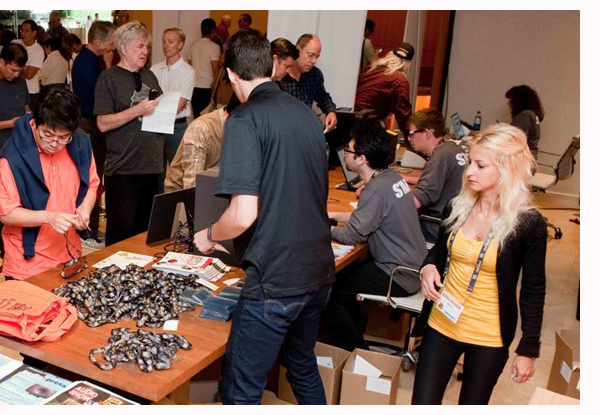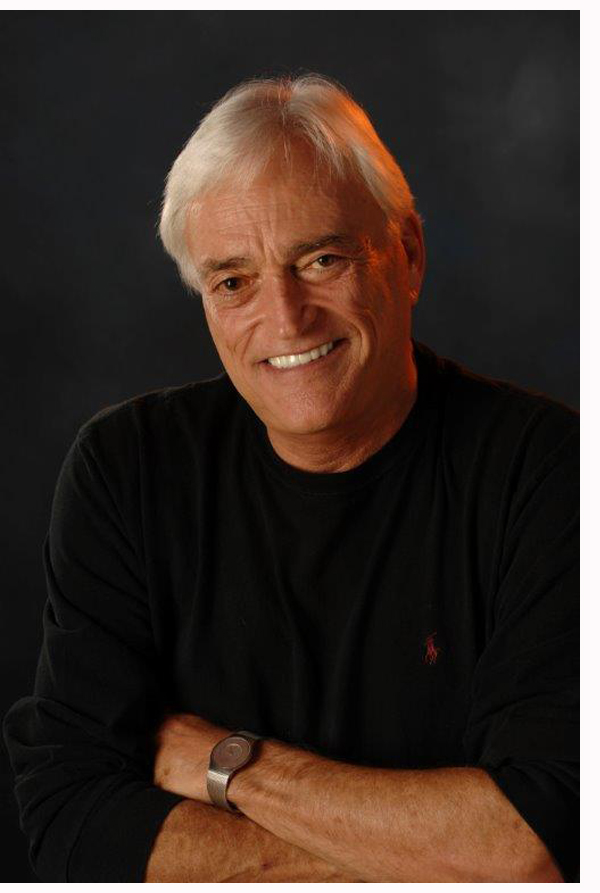Welcome to the Interviews Section.
Interviews
Ammoflage!
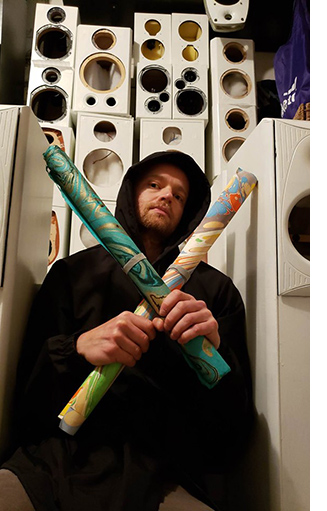 Friend and occasional TONE contributor Andy “Ammo” Schneider has been doing something incredibly creative with his spare time, combining a love for music, art, and high end audio.
Friend and occasional TONE contributor Andy “Ammo” Schneider has been doing something incredibly creative with his spare time, combining a love for music, art, and high end audio.
You may have seen “Ammo” on the stage at Coachella, or selling audio gear at AV San Francisco in a past life, or roaming the streets of Seattle, where he now calls home.
An incredibly multifaceted individual, he’s combined his highly tuned visual skills and music love with an environmentally friendly and affordable approach to audio gear. He’s been wrapping, painting, and grinding secondhand, inexpensive gear to create one – off pieces of audio art.
We chat a lot on Facebook, so I’ve been following his progress. He had a few minutes to give me some more specifics into the how and why (or as they say in art school, “explain your process”) and talk about some of his friends/customers than now have a unique way to listen to music.
TONE: How did you come up with this idea, that is obviously way off the beaten path for audio?
Ammo: I started doing this in San Francisco years ago when I was between jobs, just to stay busy and sane. Though I have a decent 9-5’er now, I’ve got a bit more time since musicians like myself aren’t on the road touring. I’ve always loved collecting audio and am on Craigslist all the time. Friends are always asking me for help wading through the audio jungle, but it must look cool. I’m always the one that friends call when they are looking for a system. Regardless of what I’m doing, I’ll always drop everything and start searching to find them something.
I think if you can make hifi look interesting, it’s a lot easier to step beyond an Apple or Google device to play and enjoy music more. Once it gets into the house, it’s like a Trojan Horse! I’m particularly proud to say that I have as many female customers as male, which having worked in audio retail, is not usually the case.
TONE: Agreed. Visual appeal is something many manufacturers overlook, or some of the ones that pay close attention to aesthetics, build gear that is out of reach for more casual buyers.
Ammo: I’m definitely building these for people my age and younger, a lot of my followers on Instagram (you can find him here: @ammodrums under the “ammoflage” Highlights). I’m always trying to make something interesting and personal. Every single piece is a one off, done by me, by hand.
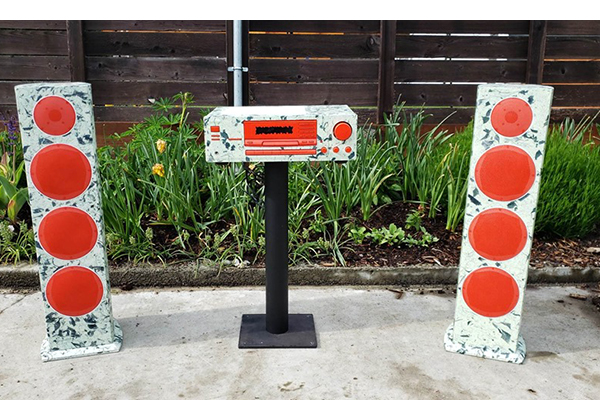 TONE: What do you look for in donor gear?
TONE: What do you look for in donor gear?
Ammo: I try to keep it reasonable. I love stuff in the $25 – $100/per box range, as that makes it much more accessible for the end users. I love tackling new speakers whenever I can, though personally I love Andrew Jones’ earlier work with Pioneer. For a while you could get those for $50 a pair new! I’m watching for stuff that’s easy to modify visually.
Athena speakers are great for the price, and the ones I’m always looking for since you can do some interesting contrast stuff with the different removable fascia pieces. I like some of the smaller Polk Audio models too.
It’s also interesting to note that used gear in Portland is way more expensive than Seattle or San Francisco. I suspect it’s because the gear stayed with families a lot longer, and how painfully hip Portlanders are with collecting vintage kit.
TONE: What was one of your biggest challenges?
Ammo: My favorite challenges are when someone sends me a picture of their living room and lets me take it from there, carte blanche. My least favorite challenge was an old Denon amp that was the ugliest thing. I sanded everything off, telling the buyer to just remember the button and knob functions from a picture.
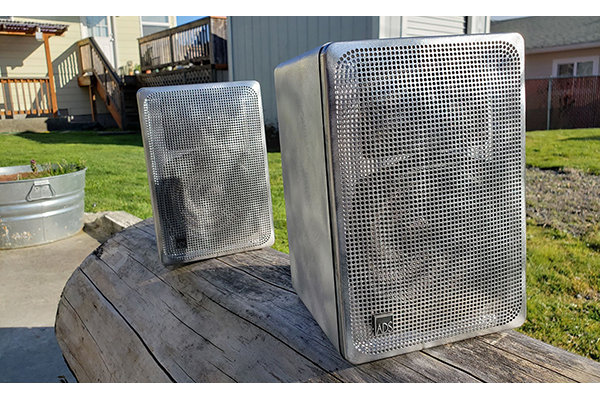 TONE: Yeah, I saw that one! Liked that, as well as those vintage A/D/S speakers that got the same treatment!
TONE: Yeah, I saw that one! Liked that, as well as those vintage A/D/S speakers that got the same treatment!
Ammo: It’s a creative outlet, and a way to get people to understand and enjoy their music in a new, fun way – ironically by focusing on how their stereo looks rather than sounds.
TONE: What else goes into the project?
Ammo: Art supplies. Lots of art supplies. I’m stocking up on art supplies just to keep up! I’m not really making a profit, but am staying even. If someone decides to pay me a decent price, I’ll gift another system to someone who can’t afford investing in a decent rig. Kinda like Toms for speakers, only without a business model. My audience isn’t necessarily the standard audio store customers either. But it is helping to bring more people to music – that’s way better than binging on Netflix all day!
TONE: Can you tell us more about the colors and the rest of your process?
Ammo: I primer the cabinets, and then work with a wide range of mostly Indian and Thai hand-made craft papers. I stick it down with an adhesive compound – the paper is very delicate. This kind of negates scaling to a wider audience. But who knows?
TONE: Do you go more for subtle or statement pieces?
Ammo: One goal is to make the pieces look as far away from original as possible. I look for interesting patterns, ranging from organic to psychedelic.
TONE: Do you take input from the recipients of your creations?
Ammo: All the time. I work with my friends to see the color pallete of their living space. I always get interesting vibes and inspirations. I did one pair of speakers to match a friend’s shoes, because he told me he would be putting his favorite pair of shoes on one of the speakers.
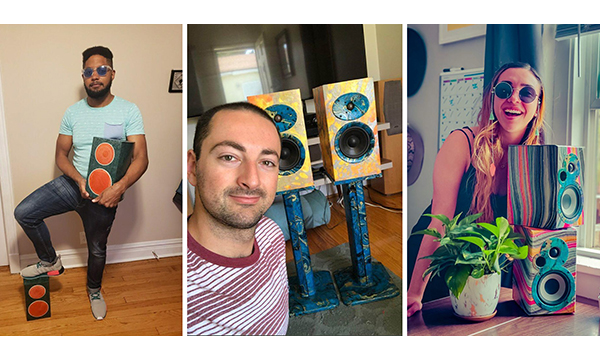 TONE: Better than the cat, eh?
TONE: Better than the cat, eh?
Ammo: Hahahah. Hey I’d color-match someone’s cat if someone asked!
TONE: This is certainly a great way to introduce people to hifi.
Ammo: I think so, and it’s awesome to hear from clients how much more time they’re spending listening to music, which is amazing. I’m not really trying to be a product evangelist, and most of this gear is mass market to be sure, but it still sounds way better than an Alexa, or Sonos all in one.
TONE: And that’s still a major step forward, for all.
Ammo: Agreed!
So, if you’re looking for something way more interesting than an Alexa, drop Andy “Ammo” a note on Facebook, Instagram, or email directly at [email protected]. These are some incredible creations.
Q&A with Marine Presson, General Manager, T.H.E. Show Newport 2016
Amidst the hectic planning for 2016’s T.H.E. Show Newport starting June 3, General Manager Marine Presson took time out to talk with us about the coming event. Read her advice for first time attendees, planned highlights of the coming show, and Newport’s future direction with the tragic loss of event founder Richard Beers earlier this year.
TONEAudio: How did you first get involved with T.H.E. Show Newport?
PRESSON: I met Richard while working at the Atrium Hotel in 2011 and as the Conference Service Manager during the 2014 show, he was impressed with my work ethic and personable demeanor. Along with others, I believed his graphic advertising could use a touch of class and breathing room so I would always tell him to hire me as his Graphic Designer and shortly after the event, he did! In 2015, that was my ‘official’ role but as we grew closer professionally and personally, he started talking about me taking over and light-heartedly introducing me as the GM to some. Initially, I told him he was nuts! But what I didn’t realize at the time, is he already knew of his failing health and wasn’t joking at all. He saw someone that could do what he did and so he taught me everything possible during that short time. He became very sick immediately after the 2015 show and that’s when I began slowly taking over more and more of his tasks. A few days following the New Year, he was in the hospital incapacitated so I made the decision to take over entirely for the simple purpose of continuing his legacy as I knew that even if he recovered, it wouldn’t be in time to pull off this show.
TONEAudio: What makes T.H.E. Show Newport special compared with other audio events around the U.S./World?
PRESSON: Richard built this Show with a focus on making everyone involved – exhibitors, attendees, press, entertainers, etc. – feel like they were part of THE Show family and inviting all to join; this is why “Open to the Public” is noted on nearly all advertising we do. He was open to feedback and suggestions, always implementing positive changes that would further grow the event making it more successful each year, and keeping everyone happy. As I move forward with his legacy, it is my goal to continue creating opportunities for friendships and business connections as well as making it a fun, high-energy event that people can feel excited for. Essentially, it’s a big family party where business can thrive.
TONEAudio: Compared with past Newport shows, what makes 2016’s event a must-attend?
PRESSON: First—it will be host to Richard Beers’s official and only memorial so we encourage everyone to join us in celebrating his life on Friday evening, June 3rd in T.H.E. Lounge. Secondly—we are also putting more emphasis on the personal listening market and expect to see more young faces than ever before, a necessity for the survival of the audio industry in general.
TONEAudio: What advice would you give a first-time attendee?
PRESSON: Purchase your tickets ahead of time and bring your confirmation email to ensure a smooth onsite registration experience. Utilize the tabs in the event guide to navigate your “show attack” – find exhibitors on our alphabetical listing, or use the maps as you walk the halls to find your favorite companies. Enter your name in every raffle box and join us for the drawing on Sunday to win big prizes! Isn’t everything so much more fun when you walk away with a prize? When you need some down time, head over to T.H.E. Lounge to enjoy some amazing live music, grab a drink and recharge your batteries – or take advantage of the lively energy to network with great people.
TONEAudio: We are all shocked and saddened by the passing of Richard Beers, and understand this year’s event is dedicated to his memory. What is your own favorite memory of Richard?
PRESSON: Everyone knows Richard was rarely on time – I got married just before last year’s show on May 15th and being the loving father figure he was to me, made it a point to be on time for the ceremony. It was very special for me. His humor, intelligence, and down-to-earth personality made for countless memorable conversations late into the night that I will treasure for the rest of my life.
TONEAudio: What do you think Richard would most like for all of us to remember about him?
PRESSON: Every discussion with Richard involved laughs – no matter the situation, there was always at minimum a good chuckle. He was a high-spirited, funny, hard working, and generous warrior. T.H.E. Show was his #1 priority and even through his failing health, he gave it his all. Failure was never option, he was going to take care of everyone as long as he physically could—and he did.
TONEAudio: What do you see as the future of T.H.E. Show? How will it grow or change over time?
PRESSON: There are still a lot of details to consider for the future but the bottom line is, I am dedicated to ensuring Richard’s legacy lives on. I will make every effort to ensure growth in a warm, friendly, and productive manner. Being of a younger age than many in the industry, I’m fully embracing my advantage of reaching Generation Y, the Millenniums – they are our future and it’s my personal goal to introduce them to the amazing experiences the audio community has to offer.
TONEAudio: What is your favorite part of managing a large-scale event like this?
PRESSON: When Richard first introduced the possibility of me taking over in 2018, I was hesitant because it seemed like an overwhelming lifestyle. When I got my feet wet, and then completely submerged in this lifestyle the last few months, I fell in love with the role. He was right—it’s the perfect gig for me! Why? Because just like him, I enjoy doing a lot and especially in a fast-paced setting (some of us are just crazy like that!). I thoroughly enjoy being challenged on a day-to-day basis, planning and coordinating, and more importantly I love taking care of people and contributing to their successes. I am the type of person that thrives in these ‘overwhelming’ situations and the rewarding feeling of completing an even successfully is priceless—for lack of better words.
TONEAudio: What do you find the most challenging element?
PRESSON: All aspects are challenging; you’re trying to make thousands of people happy—it’s nearly impossible to please every single person. But the most challenging this year specifically has been the feeling of loneliness. The wondering of ‘who’s here to help me and who’s here to help themselves?’ I’m still learning who the big players are, how everyone contributes differently, and putting together the pieces of the puzzle that were solely in Richard’s head. Next year will no doubt be less painful!
TONEAudio: When you are not working hard on show planning, what do you enjoy doing in your spare time?
PRESSON: Spending time with my family and pets—a lab mix, puggle, and senior cat keep me busy! My husband, Wess and I moved to Colorado last June to increase our outdoor opportunities—hiking, fishing, and sunbathing to name a few are musts! Having been born & raised in France, I’m naturally a foodie so I absolutely love dining out and cooking. And lastly—reading is my therapy.
TONEAudio: Is there anything else you want TONEAudio readers to know about the event?
PRESSON: The mission for 2016 is to maintain as much authenticity as possible. We are keeping a lot of the same from vendors to operations and mostly everything in between (with some fixes to efficiency leaks). That being said, as I discover more about the industry and event itself, I will be making whatever changes are necessary to improve the event and I am game for all that will contribute positivity to the audio community—feedback is always welcome and encouraged; it is only through understanding what you want that we can continuously expand on our successes.
Starting early May, we’ll be launching our Exhibitor Spotlight so be sure to follow us on Facebook and Twitter!
On a final note, we’d love to hear your favorite memories of Richard, please share them on his guestbook and be sure to RSVP for his official memorial taking place Friday, June 3rd at T.H.E. Show Newport.
Find out more about T.H.E. Show Newport on their webpage
Sonus faber’s Livio Cucuzza
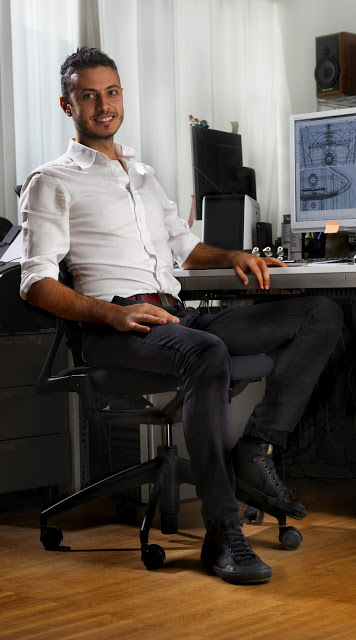 Livio Cucuzza is no stranger to the world of high end audio.
Livio Cucuzza is no stranger to the world of high end audio.
You probably know him for his recent work with Sonus faber: the recent Amati Futura, Guarneri Evolution, the spectacular Aida and the new entry level Venere line. His influence even extends to the soon to be released Wadia Intuition 01.
But you might not be aware of his work prior to Sonus faber. Working with other Italian companies led me to his commentary when working at Emme speakers. Further research reveals Cucuzza as the design visionary behind many other companies as well – not all are done in house as you might suspect!
Read the rest of the article and the full interview here at Mono & Stereo...
Photo and text courtesy of Mono & Stereo.
A Quick Chat With TR
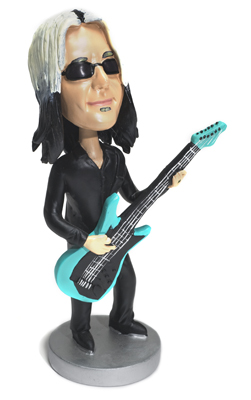 A few years ago, I had a great chat with Todd Rundgren backstage in Seattle, the day before he released the Arena album, which lead to a formal interview a few weeks later. So for all the Todd fans in the crowd, here’s a little bit of history.
A few years ago, I had a great chat with Todd Rundgren backstage in Seattle, the day before he released the Arena album, which lead to a formal interview a few weeks later. So for all the Todd fans in the crowd, here’s a little bit of history.
TA: How are you feeling after kicking the show off in Seattle? It seemed like the audience responded well and everyone I talked to in line before the show had already purchased the new album, which was released yesterday.
TR: It’s been surprisingly well received for an unfamiliar batch of music. The release was originally supposed to be in July, so we expected to be playing for an audience more familiar with the material. I guess the word of mouth has been good, or we never would have made it back to Seattle.
TA: You mentioned the album is a bit of a continuation of what you started with Liars. I guess the Socrates quote about the “unexamined life isn’t worth living” does not apply to Todd Rundgren?
TR: I have selfish reasons for making my records. Sometimes it’s just self-entertainment, but I’m usually trying to externalize my own thoughts. It helps me figure out to what degree I’m bullshitting myself — it can be very revelatory to hear what you think said out loud.
TA: Though Liars and Arena are part of your ongoing self-exploration, they are very different texturally, with Liars being a much more keyboard-oriented record and Arena being a heavy guitar record. What led you down this path?
TR: When the New Cars prematurely ended the first tour because of Elliot (Easton’s) collarbone accident, I was looking at a summer with no gigs. I put together a guitar quartet with Jesse Gress, Tony Levin and Jerry Marotta and toured across Canada for a few weeks. The response was so enthusiastic that I continued the format in the U.S. and Japan. People seemed to like the return to the ‘70s approach, so I knew when I got around to recording that the guitar would be the featured instrument.
TA: As always, you had a great choice of material last night, but where did “Lunatic Fringe” come from? Didn’t think I’d ever see you doing that song, but it was killer…
TR: Sometimes a great song will go unplayed because the original act (in this case, Red Rider) has ceased touring. I like to adopt one or two of these orphans every once in a while, especially if the subject matter fits in with what I’m doing with my own material.
TA: How did you meet Rachel Haden, (daughter of bassist Charlie Haden) and decide on her for the bass slot in the band?
TR: I met Rachel last winter when she was on Kauai visiting her brother-in-law, Jack Black (he was filming Tropic Thunder). I didn’t know she was a bass player at the time, but her name came up when we were looking for a replacement for Kas when he went out with Meat Loaf. Someone suggested we hire a girl for the position and the idea intrigued me. While there were other candidates, I took our prior connection as a sign and asked her to do the gig.
TA: Are you doing everything on Arena: playing, singing, mixing, etc., or are some of the guys from the current band playing on it? I could swear I hear some Kasim backing vocals!
TR: Once again, it’s all me. Living in Kauai, it’s hard to just call a session and have people hop over. If I had been on the mainland, I likely would have incorporated other players.
TA: You’ve been doing the solo thing on and off for a long time. Is it easier or more difficult to work alone? How hard is it for you to say, “That’s it, I’m done” when you know you can always do one more track? Are you the consummate perfectionist or a pretty task- oriented guy?
TR: It always depends on what I’m going for. Often, spontaneity is not the principal goal; recording can be an exercise in precision since the result can be so carefully examined. For a record like Nearly Human, spontaneity was the principal goal. Arena, not so much.
TA:How has your style of working changed since Something/Anything? Do you still write, compose and play in the same way or has your thought process changed dramatically over the years?
TR: I was a more conventional songwriter in the Something/Anything days, probably because most of my writing was done outside the studio. The more I had continual access to the studio and the more flexible the tools became, the more composition became a part of the recording process. Now it’s hard to distinguish between recording and composition.
TA: Digital tools have changed the audio and visual world and you’ve been an early adopter of both. Has the digital world helped you maintain your level of innovation and set you free creatively, or do you have more limitations now?
TR: I was never an analog nut, so I’m perfectly used to the digital approach. A greater range of tools in all price ranges has changed the game the most. Arena was done entirely on my laptop, and from a budgetary standpoint is probably the cheapest and easiest record I’ve ever produced.
TR: I hope this isn’t a sore spot, but seeing that you have always been such a technically oriented guy, why don’t you have a major Web presence? Is it just too much to deal with these days?
TR: I don’t, as some people assume, have a slavish fascination with technology. I don’t own a cell phone, and I hate driving. There was a time when the effort and skills needed to build a Web presence were beyond the average person. Now everyone in the world is contributing to the noise. The digital soapbox is sometimes occupied by some truly nasty personalities, which has made me something of a digital hermit.
TA: Speaking of creativity, how much has the move to Hawaii changed your life? It seems that instead of slowing down, you’ve done just the opposite. What’s the next big idea on the horizon?
TR: My location doesn’t seem to have a major effect on my creative juices. It’s still the same culture that gives me most of my ideas. The isolation does make it a bit more difficult to collaborate, but I travel enough to make up for that.
TA: What are you doing to take such good care of your voice? While some guys your age (and younger for that matter) are really struggling to belt it out, you’re singing better and stronger than ever.
TR: In some ways, I’m not taking care of it. It’s just a set of muscles, and like body building, you sometimes have to abuse them to make them stronger. The tour in Japan last spring was pretty abusive, with ten shows over six nights. As long as I don’t try to fix my voice artificially, by using drugs to get through a show, a little rest is usually all I need.
TA:Do you still stay in touch with Willie Wilcox and Roger Powell? Is there any chance of one last round of Utopia shows with the original lineup?
TR: That is the 64 million dollar question. Every couple years we discuss the possibility, and something usually happens to end that discussion. For my foreseeable future I’m playing with the Arena lineup.
TA: Have you been producing anyone lately, or is that period of your life over? You did a lot of great records over the years.
TR: We still have discussions with potential production partners. Scheduling is always a problem, especially with my current touring itinerary. There are some possibilities after this year.
TA: Though you are known best for being up front and center with a guitar, what’s your favorite instrument to play after all these years? Is there anything you hate to play?
TR: I’ve learned not to play the piano live any more. I’ve never been able to develop that Billy Joel/Elton John comfort level. I put too much focus on the singing and any instrument I’m playing is going to suffer. With only six strings, the guitar has fewer mistakes available to make.
TA: Is there anyone that you are listening to these days that you really enjoy?
TR: I’m just trying to get some listening time in, period.
Nick Mason discusses the Immersion box sets
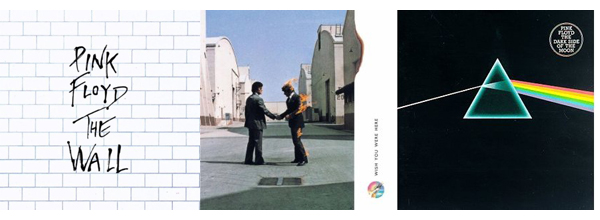 “Who Is Interested? Well, I Am”
“Who Is Interested? Well, I Am”
A Conversation With Pink Floyd Drummer Nick Mason
By Bob Gendron
Pink Floyd’s forthcoming reissue series may represent the final time that a major artist’s full catalog receives the deluxe treatment in the manner of enhanced CDs, multiple box sets, redesigned packaging, and auxiliary analog reissues. In an era where most significant artists already witnessed their output re-released in remastered form, and where record labels are increasingly reluctant to manufacture box sets or invest in fancy physical media, EMI is celebrating the British group’s legacy with an exhaustive project that has few peers.
Going well beyond that of EMI’s excellent Beatles remasters series, Pink Floyd’s rollout features reconfigured sound, artwork, inserts, and more—as well as various multi-disc sets that include scads of unreleased and/or rare audio and visual footage. While the reissues don’t street until late September, drummer Nick Mason—the band’s only contiguous member—recently talked with editor Bob Gendron about various details, memories, and procedures related to the massive campaign. In clarifying truths and recalling history, his insightful comments will likely surprise even the most diehard Floyd fans and committed audiophiles.
B: You’ve heard Pink Floyd’s studio records countless times. What jumps out at you when you listen to the new remasters?
N: The thing that strikes me is not so much the quality, although that is interesting and improved. But [the pleasure] really comes from listening to things that I’ve forgotten about. For all of our career, we never really ever revisited old demos or leftover material. The tendency has always been to put that to one side when the record is finished or when we’ve moved on and started doing other shows. Sometimes, you come across ideas that are still quite fresh or interesting, and while they were superceded by some new idea, they still have validity in their own right.
B: Is there anything specific you heard that you feel the band should have revisited?
N: The one that astonishes me that we didn’t pick up on is a version of “Wish You Were Here” that has [violinist] Stephane Grappelli playing on it. First of all, it was just a delight to hear because I always understood that it had been recorded over and we had no record of it. But also, when I did hear it, I was astonished. And I haven’t done so yet, but I must ask Roger and David if they can remember why on earth we didn’t use it. It’s still incredibly powerful.
B: Having had the chance to survey the catalog again, what is the single piece of music closest to your heart?
N: A version of “On the Run,” recorded long before we actually put it together on the record with the VCS3 tape loop, where it’s played as sort of a jazz piece. It has a rather uptempo drum thing. I listened to it and thought, ‘Good lord, is that me playing?’ I hardly recognize the band, the style, or anything else. That sort of surprise is terrific.
B: Take me through some memories conjured up by the bonus material.
N: It conjures memories of touring in the early to mid 1970s, and putting on those shows. If you looked at the concerts now, you’d just think they were quaint—that’s the word for it. They are so small compared to not what we later did, but to what everyone does now. Virtually every artist today would expect to do quite a lot of staging and music production wherever they are playing. It’s that thing of remembering—the very early cherry pickers, for instance. Hydraulic towers with mounted lights. They are tiny now, but at the time, it was a really groundbreaking idea that you actually carried all of this stage lighting with you and made it part of the show.
B: Would you deem The Wall production “quaint” as well?
N: Quaint is the right word. The Wall came later, but if you look at, for instance, the Ummagumma sleeve: There is a picture of our touring crew and all of our equipment laid out. Well, most people have that in their back room now. It all fits into a small van. But at the time, it seemed like a gigantic amount of stuff. The Wall is interesting because the version that Roger is doing now is a fantastic leap—not so much musically because he’s adhered very rigorously to the original parts played on the record—in terms of the movie parts that have been added to the show. It’s fantastic, and absolutely 30 years further down the line.
B: Speaking of visuals, do you recall being associated with the visual content that’s now included on the box sets?
N: The visuals divide into different periods. There are three major periods: The stuff we originally did for Dark Side of the Moon, which was done by various people. There was an animator named Ian Eames who did a particular series of clocks that have stood the test of time. And then there was a second wave of film done by Hungarian film director Peter Medak. And then, finally, the Gerald Scarfe film that was done for Wish You Were Here. The interesting thing with his stuff is that some of it moved on; it was the forerunner of what got used in The Wall. I’m so used to computer animation now. The actual technology is quite clunky, but the visuals are stunning.
B: To what extent was the band involved in the visual design of the album artwork?
N: There’s no easy answer to that. Not unlike the way the music was put together, it was very different from image to image. The most famous one, the prism, by Storm [Thorgerson], arrived at the studio as five different rough ideas. Within an instant, all of us agreed that the prism was absolutely the right thing, and to go with Storm’s idea. We just rubber-stamped it immediately. There are other visuals where we went backwards and forwards, and in a few cases, there were ideas that initially came from the band and then, Storm developed them. Generally those ideas were less successful—I think Storm would back me up on that. [Laughs]
B: What’s your take on the reissue redesigns?
N: Terrific, because I’m of an age where I really do see physical records disappearing and regret that [trend]—and regret all of the artwork that goes with them. This is maybe not the very last chance, but very late on for Storm to really have another look at things, decide which is best, and add some new bits and pieces. For me, that’s one of the great attractions of the reissue project. We can make sure that every piece of visual art we’ve done, plus a bit more, is made available and there for the record, so to speak.
B: How long has the reissue project been in progress?
N: It’s been in the works for a couple of years. Of course, what happened is that the idea was mentioned two years ago and a lot of the push came from the record company, EMI, which said, ‘You know, you really ought to do this.’ We were initially very lukewarm. We felt that we’d done virtually every version of the catalog that we possibly could. But as the first year went by, we started unearthing more product that could go into it. And then we found ourselves becoming interested in it. It began to make more and more sense. For me, it was the realization that I actually [explore] with other artists. Like with jazz albums; I’ll go out and buy an eight-album John Coltrane box set, which is full of outtakes. And you think, well, ‘Who is interested?’ Well, I am. So if I’m interested in it with an artist, it makes sense to let our fans have access to such material.
B: Is the rare footage coming from personal or record label archives?
N: Most of it has come from EMI’s archives rather than our own. The only things that I’ve turned out have been some very early demos that we made before we were even signed, which contains some very nice Syd Barrett songs. But for the most part, it’s been EMI. The company has very extensive vaults and pretty good cataloging. But what happened this time is that there was a much more concerted effort to look through the archives. The trouble is that, like most archives, there are always a few things that have been miscataloged or haven’t been properly checked. This time, quite a lot of stuff was brought up from the vaults, listened to, and checked. That is how, for instance, the Grappelli version of “Wish You Were Here” got discovered.
B: The multichannel options seemingly parallel the unreleased material in that they represent new horizons for the listener. Do you think surround makes for a better experience?
N: I’m fond of the 5.1 and so on. I think it gives an extra depth to the music. But we’re all coming to terms with the fact that the embracing of the digital revolution wasn’t entirely satisfactory. It’s really interesting how many people are talking about going back to vinyl. You know, when I say ‘a lot of people,’ I mean a tiny percentage. I don’t think it’s really going to catch on. But there is still enormous enthusiasm for that warm, particularly odd sound you get from vinyl. And it’s not the cleanest, most accurate sound. But it does have this quality that people really like. To some extent, it will be really interesting to see the feedback. I’m not sure in this day and age how many people still have stereo sets capable of giving them the full effect. I was just talking with some people at breakfast this morning about the technical side of the reissues, and I said, ‘Maybe we should put a sort of health warning and say it is not advised to buy this record unless you have speakers that require at least two men to carry them into the room.’ [Laughs]
B: Regarding sonics, were you conscious when you were recording albums—especially Dark Side of the Moon, Wish You Were Here, and The Wall—that they would be, more than 30 years on, be used as references by producers, engineers, and audiophiles?
N: No. It’s astonishing in some ways. I think anyone who went into rock and roll in the 60s or early 70s entered into it with the belief that it was rock and roll and it was ephemeral and that it would be all over. Anything that you produced would last around a year, and in your working life, you’d be lucky to get five years. Of course, it changed. It became a completely different thing. The point I would like to get across is that if the quality of some of this stuff is so good—and I believe it is—it’s a testament to Abbey Road and the people that worked there and the systems they had in place in the 60s, where the kids joined as apprentices and really learned the trade of making records and miking things up and going for the highest standards of loading the tape.
B: It’s shocking to hear you admit that, even in the wake of The Piper at the Gates of Dawn, Pink Floyd believed it would disappear without a trace within a few years.
N: [Laughs] We’re all very privileged and lucky to have had a 40-odd-year career out of it. Obviously, after the first 10 or 15 years, you realize it’s not likely going to go away. But initially, in the late 60s, when we kicked off and had no idea where this would lead or end up, it’s what we thought.
“Unspeakable Fire Flowing Through Art:” Bob Gendron Interviews the Man In Charge of the Roadburn Festival
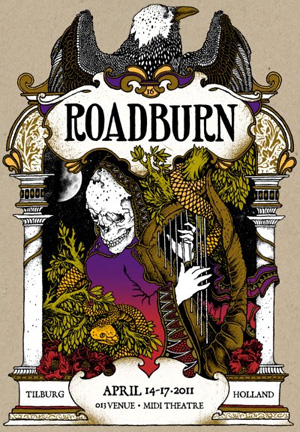 An intimate four-day gathering of psychedelic, avant-garde, heavy, and nearly every other imaginable cutting-edge sonic delight, Roadburn Festival is without peer. Every April, dozens of bands and eager listeners from more than 40 countries descend upon a quaint town in the Netherlands to share in a common love of sensory-absorbing music, underground art, and likeminded discussion. It’s not difficult to understand why.
An intimate four-day gathering of psychedelic, avant-garde, heavy, and nearly every other imaginable cutting-edge sonic delight, Roadburn Festival is without peer. Every April, dozens of bands and eager listeners from more than 40 countries descend upon a quaint town in the Netherlands to share in a common love of sensory-absorbing music, underground art, and likeminded discussion. It’s not difficult to understand why.
Unlike most festivals, Roadburn is focused and small; boundaries between the performers and audience are practically nonexistent. Due to its international reputation, unparalleled vision, and limited capacity, the multi-day event sells out within minutes. Indeed, Roadburn has become the gold standard in a music industry that’s increasingly more reliant on festivals. This year’s lineup represents a veritable wet dream for any metal, experimental, or doom fan: Sunn O))), Godflesh, Shrinebuilder, Winter, Trap Them, Corrosion of Conformity, Keiji Haino, The Secret, Earth, and Swans are just some of the names involved.
TONE is honored and humbled by the organizers’ invitation to attend Roadburn 2011. Our forthcoming report will serve as the magazine’s cover feature in Issue 37. In the meantime, to get an even better understanding of Roadburn’s history, purpose, and unique characteristics, we talked with festival organizer—and fellow audiophile—Walter Hoeijmakers via email. All festival directors should bring his level of passion, insight, and dedication to the fore.
BG: Roadburn began as a website but ultimately turned into a festival. Can
you give some background on how the music festival came about, and when you
started?
“At the very beginning, we just wanted to convey the overall feel of the website onto the stage. We started out very small by inviting several bands that we had featured on the website. Plus, we wanted to project parts of the website’s artwork behind the bands, and also have deejays spinning the music we were covering. Along the way, we started to experiment with live streams since we also sought to keep up with Internet’s progress. There was no real master plan; but nothing was contrived, either. We just did what felt best, and got tons of creative input along the way. All of this cumulated into the 10th Roadburn festival in 2005, which became the blueprint for the festival as we know it today.”
Most festivals are sprawling affairs that involve tens of thousands of people and vague artistic focus. Roadburn is the opposite. It strives to melt any boundaries between artists, fans and organizers. How do you manage to accomplish this? And what motivated you to set these goals?
“We want Roadburn to be a small, intimate, and well-organized festival. We love the bands, and thrive on creating a unique social vibe by emphasizing the cutting edge and honoring the forefathers. This is all joined together by a love of music. We’re not thriving on financial goals, neither do we want to be the next ‘best outdoor festival.’ Our main goal is to bring together a diverse group of artists that push the envelope, are truly original, and inspire us all with the unspeakable fire flowing through their art. It’s a gathering of kindred spirits, bands, and fans alike, and the lines between them are often completely blurred as they all worship the power of sound together. At Roadburn, most bands don’t hang out backstage: They can be found down in front!”
Tickets for this year’s festival sold out in about 15 minutes. The fest is now an internationally recognized phenomenon. Do you have any idea how many countries are represented by the people attending? Do you remember how long it took the first festival to sell out?
“The first-ever Roadburn Festivals didn’t sell out at all. We sold out in 2003 for the very first time when the festival took place at the Effenaar club in Eindhoven; 450 people showed up. Then, in 2006, Roadburn sold out a few days prior to the festival. We had moved to the 013 venue in Tilburg, and offered 1750 tickets. It was crazy to see that approximately 70% of our attendees were from abroad and not from the Netherlands. These figures still stand today, as we have about 44 different nationalities attending the festival. They descend upon Tilburg from the world over, ranging from the USA and South America to Australia and Japan, and all the European countries in between. For Roadburn 2011, we’re even welcoming people from Singapore and Indonesia. It’s something that still amazes me today as we just started the festival out of a labor of love, and still do it for that very reason.”
As the organizer, can you share what your duties involve and how early you start planning? Once the festival begins, are you able to enjoy it or are you too busy managing logistics?
“We start planning one year in advance. I’m already working on Roadburn 2012 even though the 2011 edition has yet to take place. Unfortunately, I’m not able to see much at the festival as I’m often busy micro-managing. I always tend to spend time with bands and attendees, and as soon as I’m able to catch up with them, you’ll find me backstage or talking to all the wonderful people in the venue’s hallways. Sometimes I can enjoy a band. There’s always a show that I’m trying to catch in its entirety, and it’s my goal to catch several this year. I desperately want to see likes of Wovenhand and Shrinebuilder, among others. Luckily, we record most performances for the on-demand audio streams, and I catch up with everything at home when listening to the steams.”
The lineup for Roadburn 2011 is any metal and underground music fan’s dream. How do you go about inviting artists? Do you start with a wish list? Do certain bands contact you expressing their desire?
“Both Jurgen van den Brand (Roadburn’s co-organizer) and I start out with a band list. We have a pretty good idea of the bands we’d like to invite for the festival. The list keeps changing throughout the year, and we’re very proactive by approaching the bands ourselves. It’s always very rewarding if certain bands on our list start to approach us. It’s in the spirit of the festival, and makes confirming their involvement easy. On a personal note, I’ve been around in the underground scene for more than 25 years and happen to know many bands personally, as well as lots of bookings agents, managers, and journalists. This is really helpful, because getting in touch with certain bands is really easy for me. The Roadburn phenomenon also helps to get in touch with bands that I don’t know on a personal level.”
You were able to get Keiji Haino, Caspar Brotzmann Massaker, Ufomammut, and at least a half dozen other bands that can be considered nothing less than coups for any festival. How does one go about doing this?
“Keiji Haino and Caspar Brotzmann Massaker have been invited by Sunn O))) for their curated Roadburn event. We asked [Sunn O))) leaders] Greg Anderson and Stephen O’Malley to open up the styles and sounds of the festival, and they did a great job. Their curated day is nothing short of amazing, and a tribute to some master guitarists that influenced them as artists. Offering a day of the festival to a curating band or artist is of great help in getting coups for Roadburn. It inspires other bands to be part of the festival as well, as they want to be among their peers in an intimate setting—which is Roadburn.”
This year’s lineup has a definite psychedelic and doom flavor. Was this intentional? If so, are there any bands that you targeted that, for some reason, you weren’t able to get for the festival?
“It all happened naturally. When we started to work on this year’s Roadburn festival, we noticed some very interesting doom and psychedelic bands that we really liked. It’s part of our mission to put emphasis on the cutting edge. Thus, inviting these bands was inevitable, and pushed Roadburn 2011 in a more doomy and dark psychedelic direction. We love evolving the festival in manners like this to keep it interesting for our attendees. In the end, the festival should be a tribute to the open minds of bands and attendees alike. As far as bands we wanted but didn’t get, it would have been great if we could have had The Obsessed for Roadburn 2011, but we couldn’t pull of the reunion yet!”
There’s an incredible balance between new and older bands on the bill, i.e., with highly influential veterans such as COC, Pentagram, Godflesh, and Earth sharing the bill with relative newcomers such as The Secret, Liturgy, et al. Was this by design?
“We want Roadburn to be a well-balanced festival and do everything to keep it that way even if it means that we have to pass on certain opportunities. In order to keep the balance, several great bands didn’t make it on this year’s lineup. However, we remain in touch with these bands for future Roadburn festivals since they are good reference points for next year’s direction.”
Is there anything that you are doing for this year’s festival that improves upon what you did in the past?
“We keep improving every year, whether it’s about backlines, projections, crowd control, food vendors, a merchandise venue, or the metal disco. We want to maintain the laidback vibe of the festival as much as we possibly can. Luckily, the incredible staff of the 013 venue, home of Roadburn, is of great help—they are a main part of the festival, too.”
What advice what you give somebody who has never been to Roadburn?
“Go with the flow. Don’t try to catch as many bands as you’d like or get distracted by some overlaps. Please immerse yourself in the laidback vibe of the festival, and enjoy the company of all these like-minded people. Then you’ll experience the camaraderie amongst the festivalgoers and end up seeing some amazing bands you didn’t intend to see while making new friends along the way.”
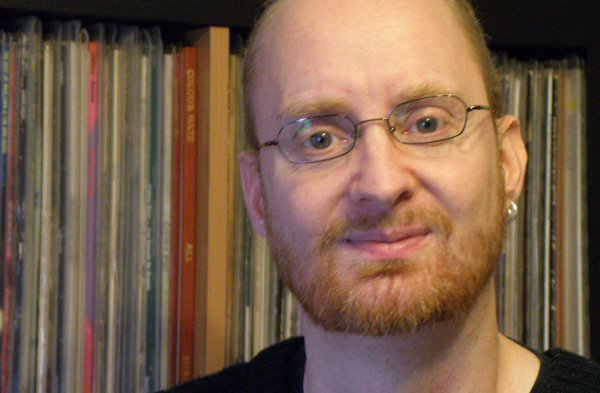 You’ve been there from the start. Can you share a few favorite memories?
You’ve been there from the start. Can you share a few favorite memories?
“There are way too many stories to be told. Maybe I should write a book some day about all the shenanigans and debauchery behind the scenes—hahaha! All joking aside, if someone would have told me 25 years ago that I would run a festival like Roadburn and collaborate with either Neurosis, Tom G Warrior (of Celtic Frost and Triptykon), Saint Vitus, or Hawkwind, I simply wouldn’t believe them. It all just happened.”
Is there any single band or performance this year that you can’t wait to see?
“As I said earlier, I’m really looking forward to seeing Dave Eugene Edward’s Wovenhand at Roadburn. It’s an incredible coup for the festival to have the band on the bill. At first glimpse, Wovenhand is a little off-kilter, as Roadburn tends to be an underground festival for psychedelic, avant-garde, doom, or any other variation of leftfield sonic pleasures that push the boundaries of music. But Wovenhand will prove that making really heavy music does not necessarily mean having the loudest guitar or the most amps.”
You’re obviously a huge music fan. And the intimate construction of the festival suggests that you appreciate good sound. Are you interested in audio gear? If so, on what kind of system do you listen to music at home?
“I have been fascinated by audio gear and spent lots of money on speakers, interlinks, tweaks, and the like over the years—just like many of TONE’s readers, I suppose. For the last 8 years, I’ve been really enjoying my Marantz Music Link series (preamp, phono preamp and monoblocks). My current set of speakers is Floating Systems’ Synthese.
“I have a pair of AE4s (by Acoustic Energy) as well, but don’t use them very often. I really love old MIT interlinks and MIT Terminator speaker cables, which I prefer over high-end Japanese brands like 47 Lab; I have some of their interlinks as well.
“I’m in love with my mid-70s Ariston RD 11 turntable (it’s the predecessor of Linn’s LP12) plus SME tonearm. As far as cartridges go, I’m sticking to a Grado Statement Wood—amazing warmth, and perfect for my vast collection of 60s and 70s rock on vinyl. “I prefer vinyl over CDs any time, but have an experimental CD player that’s custom-built by a Swiss audio geek. I bought it relatively cheap. Sometimes you need to be lucky!”
Wayne Coyne of the Flaming Lips
As witty and fun in person as he is on record, Flaming Lips frontman Wayne Coyne is full of big ideas. With his band having just released Embryonic and an updated version of Pink Floyd’s Dark Side of the Moon, he reflected on the process of putting out two records in such a short time and how the group decided to take on such a classic recording.
While available as an iTunes download since December, the album will be available on LP this Saturday in honor of Record Store Day, for $24.
TONE: How long was the Dark Side project in the making?
WC: As we were finishing Embryonic, the iTunes management wanted some exclusive bonus tracks for the iTunes store, and quite frankly, we didn’t have any. I posed the question of us doing Dark Side of the Moon because I knew my nephew’s band (the White Dwarfs) was very familiar with it and I knew it could be really fun. Ten minutes later, the Apple guys were happy with the idea and we were off.
TONE: Were there any snags in the production? Did you hit a point where you felt that perhaps you had too much of a mountain to climb?
WC: When we got together in the studio, it all fell together relatively quickly and was pretty painless. It was the same thing with Peaches; she raps a lot but she’s a crazy singer. Her vocal to “Great Gig in the Sky” was fantastic – that’s a tough one for anyone to pull off.
TONE: Who decided to have Henry Rollins do the voiceovers? Are you guys big Rollins fans, or did you just decide at lunch that he was the man?
WC: We already knew Henry and we all agreed he would be perfect if his schedule would permit. When we ran it past him, he responded almost instantly. It was all done remotely. We sent him the music and he sent back the tracks we needed, along with plenty of alternates to choose from. Henry is a great guy to work with.
TONE: It was very cool that you took such a creative perspective on Dark Side by making it such a different piece of music. It’s good to see that you just didn’t go Dream Theater on it.
WC: (laughs) Well, we wanted to make sure it had our stamp on it.
TONE: Having recently finished Embryonic, was it grueling to put out another record two months later? Was it tough to keep two very different streams of creativity straight in your brain?
WC: Actually, Embryonic was released in a relatively short time for us—only about three-to-four months. By the end of the record, we had been going in a certain direction with the things we learned from the Embryonic sessions, so the new direction with Dark Side was a fairly easy transition.
TONE: The current tour shows dates from March to June here in the US. Are you guys taking some time off now?
WC: We have more things to announce, but we can’t chat about that right now. When I talked to someone about the idea of doing Bonaroo this year, it was on the Internet in 30 minutes and pretty much all around the world instantly. So we are definitely on the roster, but I’m hesitant to let anything out right now, as I know it will be on Facebook in about 8 minutes.
TONE: Will the Lips play Dark Side anywhere else besides at Bonaroo? Speaking of that fest, Steve Martin is going to be playing banjo there. Will you guys invite him up onstage to collaborate? That would be trippy!
WC: Now that’s a great idea. Let’s formally announce right here that we will try to get Steve Martin to perform a song with us at Bonaroo. And we will be performing DSOM in its entirety at Bonaroo. If you get a chance, listen to Steve Martin’s autobiography, which he narrates on iTunes. It’s very interesting and lends a lot of depth to his personality. We listened to it on a long road trip recently and it was much more engaging than Obama’s autobiography.
TONE: How has Dark Side been received? Has it added to or distracted from the material on Embryonic, seeing that both records were released so closely together?
WC: Good question. So far, our fans seem to be enjoying both records equally. It’s always our hope that you can enjoy the spectrum of what we do. I’m glad people still love and talk about Yoshimi Battles the Pink Robots, but I always hope they will enjoy the latest work as well.
TONE: Was Steven Colbert a pretty cool cat when you recently played his show? Is he a big Flaming Lips fan?
WC: Playing the “Colbert Report” was great. Steven is an outstanding host and a really hard-working guy. He’s there before you are, making sure everything is in its place, etc. A lot of the guys on his staff are big fans too, so it was a great experience.
TONE: Do you get tired of people referring to you as a psychedelic band? I always like to think of the Flaming Lips as a highly complex band.
WC: I look at the psychedelic label as just the ability to be a little more creative with what we do, not sticking to a particular song structure or music structure. I’m 49 years old, so my interpretation of psych is perhaps a little different than some of our fans in their 20s who don’t have the same perspective on the Grateful Dead or punk rock. But it’s still more of a creative way to look at things.
TONE: You made a comment a while back, saying, “Hovering above complete failure gives you a lot of creative freedom.” I’d hope you guys are doing a bit better than that these days.
WC: In order for us to live our dream of making music, touring, and the like, you have to have a certain level of organization and discipline to make it all work. We have to keep everyone fed, so they can keep making music.
Photo, courtesy J.Michelle Martin-Coyne
Please note that all TONE and TONE related text and images are copyright © 2005–2024 TONE Magazine and The Audiophile Apartment. The RSS feed provided is for personal, non-commercial use only.
If you are not reading this content in your news aggregator, RSS reader, or direct, then the site you are looking at may be guilty of copyright infringement. If you locate this anywhere, please contact [email protected] so we can take action immediately.



